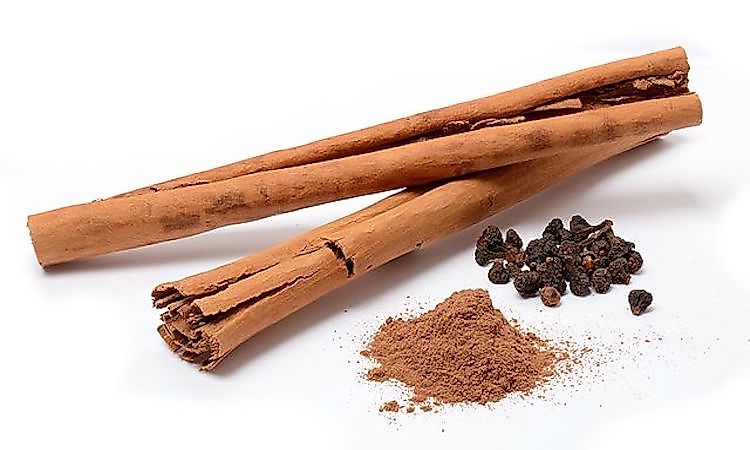Where Does Cinnamon Come From?

What Is Cinnamon?
Cinnamon is a brown spice that is cultivated from a specific type of tree bark. Several tree species belonging to the Cinnamomum genus can produce this spice. The two most principal types are Ceylon cinnamon and cassia cinnamon.
Uses Of Cinnamon
Cinnamon has been important to humans since ancient times. Over the years, it has become useful in a variety of aspects. Cinnamon is commonly used as a condiment, an alcohol flavoring, and for traditional medicine.
In the kitchen, cinnamon is prized for its strong smell and taste. It is commonly mixed with chocolate, tea, desserts, candies, and coffee. In the Middle East, cinnamon is used both for sweet and savory dishes. It is a common condiment for lamb, chicken, and some vegetables.
As an alcohol flavoring, cinnamon is equally valuable. In ancient times, it was used to flavor Roman wine. Today, it is used to add a spicy flavor to everything from whiskey to liqueur and is added to hot wine in some countries during the cold winter months.
Cinnamon has a long history as a traditional medicine and continues to be used for this purpose today. Proponents of its medicinal use claim that it has several health benefits including high levels of antioxidants, anti-inflammatory properties, reduction in cholesterol and blood pressure, and increased sensitivity to insulin (which helps control blood sugar levels). Some research also suggests that cinnamon may help fight Alzheimer’s disease, Parkinson’s disease, and cancer.
Where Does Cinnamon Come From?
Cinnamon is native to Sri Lanka, Bangladesh, Burma, and the Malabar Coast of India. Records indicate that Egypt imported the spice as early as 2,000 BC. Through the spice trade, it was eventually introduced to Mediterranean countries, with a Greek account dating back to the 7th century BC. By the Middle Ages, Europe was buying cinnamon and traders kept its source secret. In fact, Indonesian traders brought the spice to East Africa, and from there, it was taken to Egypt. For many years, Italian traders dispersed cinnamon from Egypt, holding a monopoly over the cinnamon trade in Europe.
Today, Sri Lanka produces between 80% and 90% of the world’s C. verum cinnamon supply. Seychelles and Madagascar also cultivate this cinnamon on a much smaller scale. Cassia cinnamon, a more common variety, is mainly produced in Indonesia which provides approximately 66% of global supplies. China, India, and Vietnam also produce this cinnamon type.
How Is Cinnamon Cultivated?
As previously mentioned, cinnamon comes from a specific tree bark. Farmers grow these trees for around two years before they cut it at its base. The roots are left behind to grow new saplings. While the harvest is still wet, the tree stems are processed. To obtain the cinnamon, workers first remove the outer bark. The remaining stem is then pounded to loosen the inner bark, which is where the cinnamon is located. This inner bark is then rolled off the stem into long pieces. This rolled bark is then set out to dry for approximately 4 to 6 hours. As it drys, the cinnamon curls into something known as quills. The long quills are then either cut into 2 to 4-inch pieces or ground into powder for the market.











